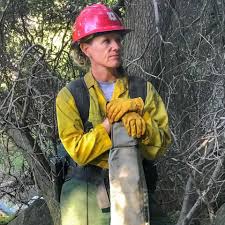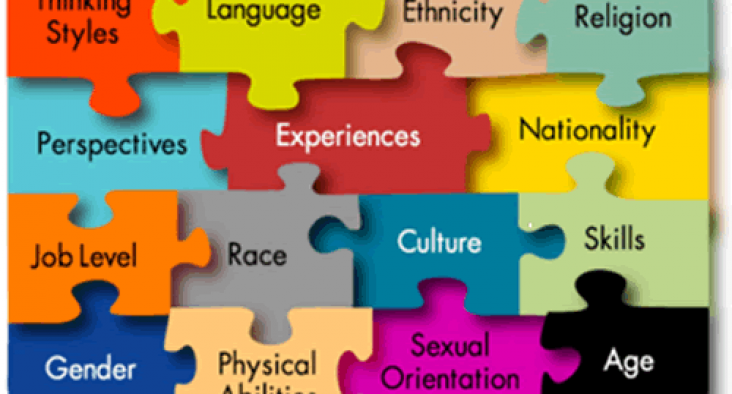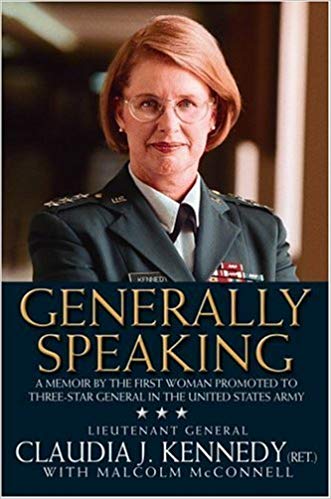By: Robert Avsec, Executive Fire Officer
So, I was on the road headed towards FDIC 2019 in Indianapolis and some random thoughts began running through my head concerning fire service organizations and sexual harassment and inclusion and how are these things all intertwined. And how does the fire service work to eliminate that entanglement?

The recent letter from my fire service colleague, Abby Bolt, where she resigned as a battalion chief with the U.S. Forest Service really got me thinking about this whole issue. The issue of harassment that we see in the fire service, and the retaliation for reporting harassment, and the systemic sexism and systemic misogyny that exists in too many fire service organizations.
Inclusion
Now let’s step away from that part of this discussion and look at the inclusion of members of the non-dominant group in fire service organizations (Want to know who the dominant and non-dominant groups are? Check out, 7 steps to an inclusive fire department culture.)

I think that you’re going to find that in those organizations where women are included in the organization, where they are able to participate and grow and advance within organizations, you’re also going to find that there’s probably not very much in the way of sexual harassment or sexism or discrimination going on in those departments.
Why do I think that? From reading accounts, both on and off line, it is evident that too many fire officers still don’t “get it” when it comes to dignity in the workplace. I believe that is one of the fundamental factors in this ongoing blight on the profession that many of us hold near and dear to our hearts: we still have too many officers who don’t manage their fire station like a workplace in 2019.
The U.S. Army’s experience
Several years ago, I read a really good book, Generally Speaking, written by Lt. General Claudia Kennedy (Ret.), which turned out to be a really good book on leadership (in addition to being a great read).

One of the chapters deals with her Army experiences that influenced her attitudes about fairness and equality. In the chapter she discusses the Army’s reaction to the sexual harassment scandals at the Aberdeen Proving Grounds (APG) in Maryland (1996).
At APG, twelve NCO [Non-Commissioned Officer] drill sergeants were charged with various offenses to female trainees ranging from sexual harassment to sexual assault and rape (Of the twelve drill instructors charged with sex crimes, four were sentenced to prison, while eight others were discharged or received non-judicial punishment).
As part of the Army’s investigation, General Kennedy was appointed as a member of the Secretary of the Army’s Senior Review Panel on Sexual Harassment. That panel used surveys, focus groups, personal interviews and observations that involved 30,000 soldiers world-wide. Specific data analysis involved a cohort of 15,000 men and women soldiers across all branches of the Army.
Not surprisingly, the Review Panel found that Army leaders were the critical factor in creating, maintaining, and enforcing an environment of respect and dignity. But too many leaders had failed to gain the trust of their soldiers.
U.S. Army Lt. General (Ret.) Claudia Kennedy in Generally Speaking
The good news was that the panel also found many examples of good leadership in many units around the world, even during deployments like Kuwait and Bosnia in the 1990’s, where the leaders created high levels of respect and dignity in the harshest and most challenging work environments. The panel identified four characteristics in common for these types of units. They had good leaders who:
- Set standards for the members of their organization.
- Exemplified, through their personal conduct, adherence to those standards.
- Enforced and maintained those standards for the other members of the organization.
- Demonstrated genuine care and concern for their soldiers, regardless of their rank, race, or gender.
The Army units that were led by leaders with these characteristics were also high performing, operationally proficient units. Providing respect and dignity in the workplace will do that for you.
Sailors Created ‘Rape List’ Aboard Navy’s 2nd Sub to Integrate Women
So, where is the fire service missing the boat?
In most fire departments, the dominant group is the white male and that dominant group has written the rules, the regulations, and the procedures. And they’ve created all the cultural elements that goes along with those formal documents (e.g., patches, slogans, work practices, and yes, even hazing). All of which—as with any organization—serve as controls to ensure that the dominant group remains the dominant group.
But I believe there’s more to it and in a previous blog, Clan Behavior and its Influence on Fire Service Culture, I wrote that:
It’s not hard to imagine that clan behavior would become deeply rooted in the culture in firehouses where most firefighters belonged to such a persecuted class of workers (early immigrants to the U.S., such as the Irish and other eastern European countries). I, for one, can see clan DNA in that of the typical firefighter:
- Strong willed;
- Strong distrust of higher authority;
- Great respect for the clan leader (the strong figure in the firehouse);
- loyal to a fault when it comes to their fellow firefighters;
- Pride in their profession, especially at the firehouse level; and
- A deeply held conviction that “being a firefighter is not a job, it’s a calling.”
So, there’s a structure there and that structure is not, in most cases, conducive to anyone outside of the dominant group becoming part of that organization. The culture and the rules, and everything that’s been put in place by the dominant group, all those things are designed to keep outsiders out. Not just out of the dominant group, but out of the organization period.
If fire service organizations are really committed to diversity and inclusion, but they’re not addressing how people are treated once they’re in inside of the organization, I think that’s where people feel frustrated, people feel afraid, and people feel like there’s no place to go, no options available to them.
So, they leave the organization and that’s the big problem that many fire service organizations are dealing with today. And they will continue to deal with them until they identify that these cultural issues, including systemic sexism and misogyny, are the things that they really need to get to the heart of and root out.
 Fire & EMS Leader Pro The job of old firefighters is to teach young firefighters how to become old firefighters!
Fire & EMS Leader Pro The job of old firefighters is to teach young firefighters how to become old firefighters!